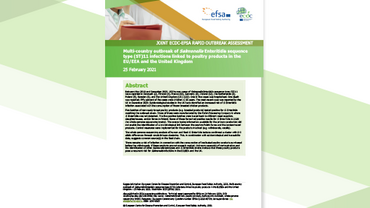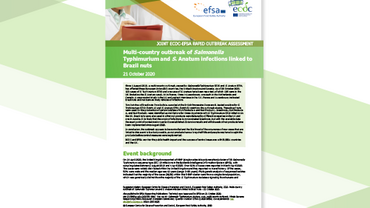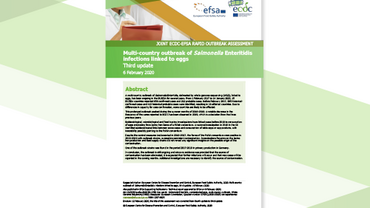Type E botulism associated with fish product consumption – Germany and Spain, 21 December 2016
This document assesses the risk to human health posed by a multi-country incident of botulism neurotoxin type E, possibly associated with consumption of a commercially-available dried and salted fish product.
Executive Summary
Four confirmed botulism E cases in Germany and two probable cases in Spain have been reported to date.
The clustering in time and very likely link to the consumption of commercially available salted and dried roach (Rutilus rutilus) indicates that this fish product may be a common source. Five human cases have a Russian background and one case has a Kazakh background. The implicated fish product has been distributed to several EU/EEA Member States and intensive recall measures have been initiated in the countries concerned following the notification from Germany to the Rapid Alert System for Food and Feed (RASFF), on 25 November.
Botulism neurotoxin type E is not an uncommon contamination in fish products, which have been poorly eviscerated and/or self-salted at home. Contamination in commercial fish products has also been reported. For this outbreak, the populations at the greatest risk are those who traditionally consume salted and dried roach. The risk for other population groups is very low in EU/EEA.
In view of the rapid initiation of recalls and targeted public warnings, the risk that new cases linked to the outbreak will appear in the EU/EEA is considered to be very low. The main potential residual risk of exposure relates to consumers still keeping the product at home who may not been made aware of the public warnings, or stores that may not have received notification of the recall and are continuing to sell the implicated fish product. Finally, there is no risk of person-to-person transmission.







